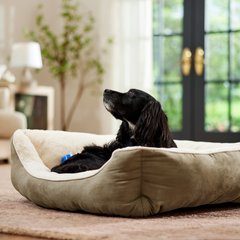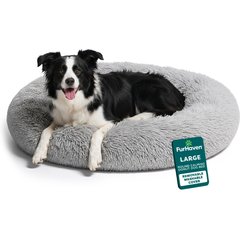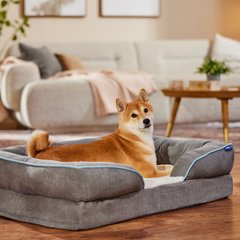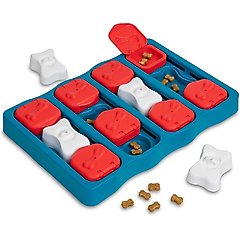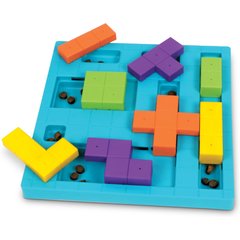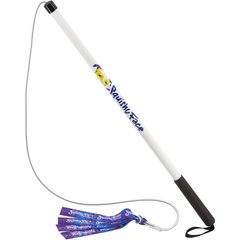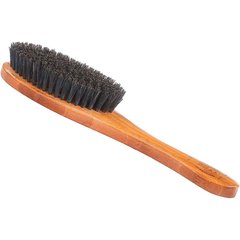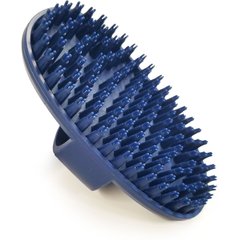Whippet vs. Greyhound vs. Italian Greyhound
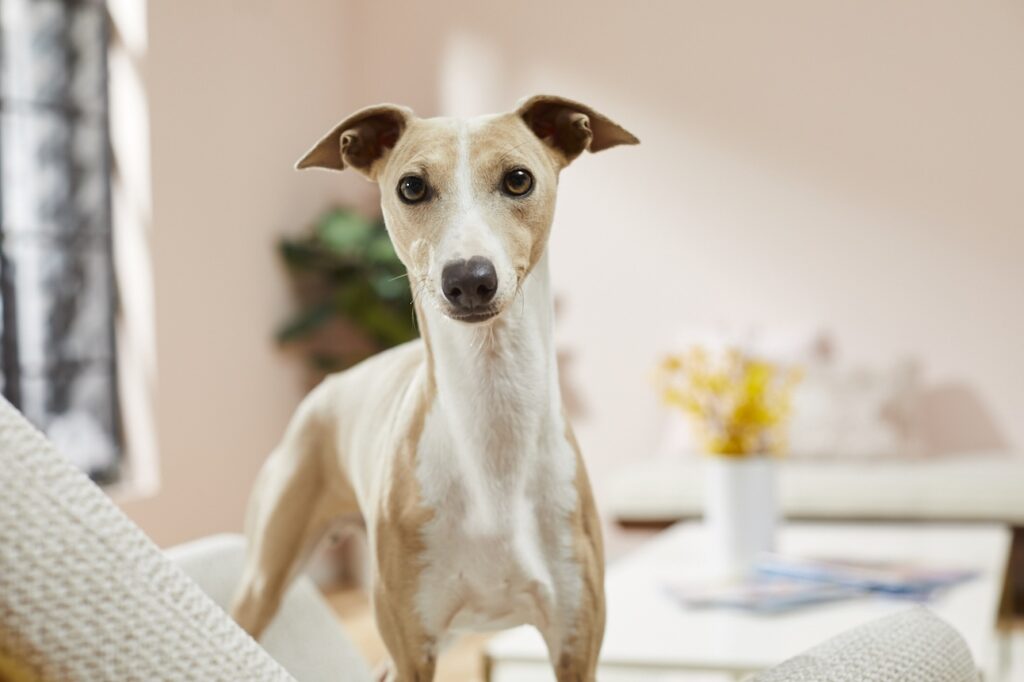
Photo by Chewy
Svelte and speedy, the Greyhound is an iconic dog breed. But are you as familiar with the slightly smaller Whippet or the petite Italian Greyhound?
Minus their obvious size discrepancy, the three sight hounds look a lot alike. But there are meaningful differences between the breeds. Here’s what to know about Greyhounds, Whippets, and Italian Greyhounds.
Key Takeaways
- Greyhounds, Whippets, and Italian Greyhounds share similar body structure and ancestry, but differ in size, energy level, and health considerations.
- Greyhounds are the largest and calmest of the three, making them a good fit for quiet homes.
- Italian Greyhounds are the most energetic, but their build makes them delicate.
- When considering a Whippet vs. Greyhound vs. Italian Greyhound, the best choice comes down to your lifestyle.
History
The Greyhound is one of the oldest dog breeds, according to the Greyhound Club of America. Depictions of Greyhound-like dogs date back 5,000 years to ancient Egypt, where they worked as hunting dogs in the desert. They are sight hounds, meaning they hunt by sight rather than scent.
Later, Greyhound dogs became sought-after hunting companions in Great Britain, where they hunted foxes and badgers, and played a starring role of lure coursing.
It was in Great Britian that smaller versions of the Greyhound began to appear as the breed was mixed with smaller terriers. The Whippet breed got its start as “the poor man’s Greyhound,” according to the American Whippet Club.
The even tinier Italian Greyhound rose to popularity in Renaissance Italy, according to the Italian Greyhound Club of America. The small dogs were status symbols of the aristocracy.
All three breeds came to the U.S. around the same time and were recognized by the American Kennel Club in the 1880s.
Appearance
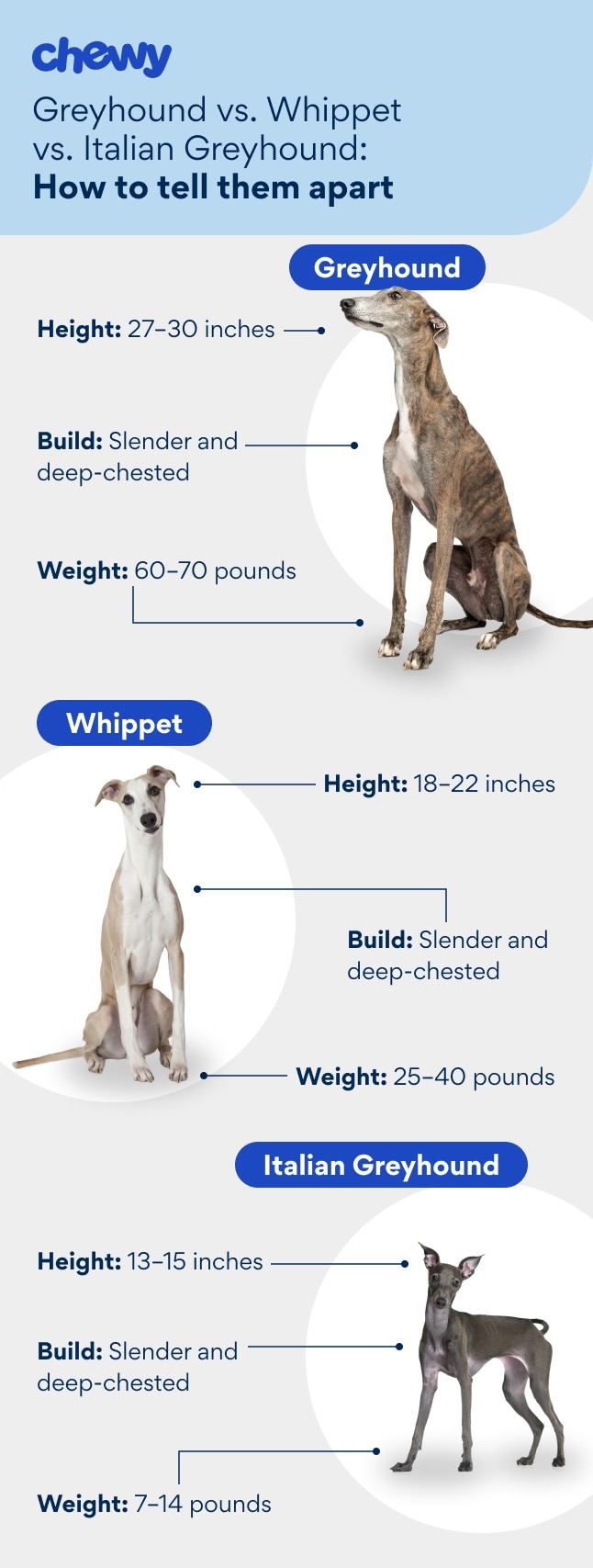
Photo by Chewy
Aside from size, these three breeds look strikingly similar—which makes sense given their shared ancestry. Here’s how to tell Greyhounds, Whippets, and Italian Greyhounds apart.
| Breed | Body Shape | Size | Coat Colors |
|---|---|---|---|
| Greyhound | Slim with a deep chest and long, thin legs | 60–70 pounds | Any color and markings |
| Whippet | Slim with a deep chest and long, thin legs | 25–40 pounds | Any color and markings |
| Italian Greyhound | Slim with a deep chest and long, thin legs | 7–14 pounds | Black, blue, fawn, red, sable, seal, or white |
Body Shape
All three breeds share a svelte body structure built for speed: a long, muscular neck; a broad back; a deep chest that tapers to a tucked abdomen; and thin, athletic legs.
A long, triangular head; bright eyes; and small rose ears that fold slightly backward are also found in all three breeds.
Size
The biggest difference is size:
- Greyhounds weigh 60–70 pounds and stand 27–30 inches tall.
- Whippets weigh 25–40 pounds and stand 18–22 inches tall.
- Italian Greyhounds weigh 7–14 pounds and stand 13–15 inches tall.
Coat Color
All three dogs can come in many colors, including black, blue, fawn, red, and white. Greyhounds and Whippets can be brindle (striped), while Italian Greyhounds don’t come in brindle.
Personality
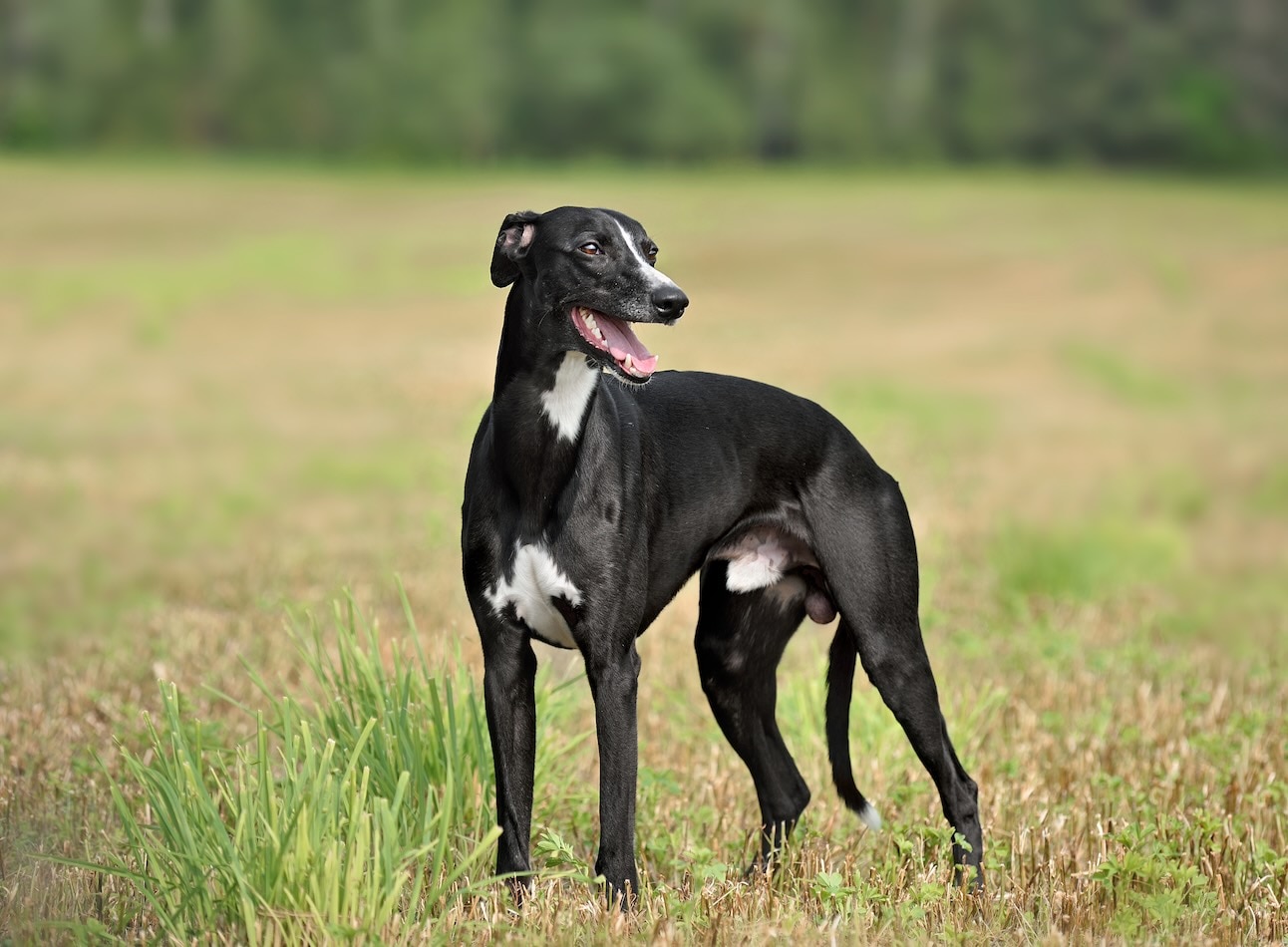
eAlisa/iStock / Getty Images Plus via Getty Images
Thanks to shared sight hound genetics, Whippets, Greyhounds, and Italian Greyhounds are similar in personality.
These gentle, laid-back dogs are often reserved and quiet, says Sean Prichard, president and head canine fitness coach at Pant & Wag in Washington D.C.
“Sight hounds are very quiet, as there is no reason to vocalize when you’re one of the fastest land animals on the planet,” he says. So don’t expect these pups to be big barkers.
But just because they don’t bark much doesn’t mean they’re unaware of their surroundings. In fact, Whippets, Greyhounds, and Italian Greyhounds are very intuitive and sensitive to what’s going on around them, and they can become uncomfortable in busy or loud environments.
Greyhounds are famously chill. They are among the fastest dog breeds, but many sleep 18–20 hours a day between sprinting sessions. Make sure you have a suitable dog bed ready.
Recommended Products
This isn’t the case for the lively Italian Greyhound. Compared to Greyhounds and Whippets, they’re the most energetic; they’re quick to chase a squirrel and often get the zoomies.
Whippets fall somewhere in between; they’re adaptable, eager-to-please companions, says Ping Pirrung, chief financial officer of the American Sighthound Field Association.
“They are relatively quiet in the house, and very active when they are outside,” Pirrung says.
Exercise Needs
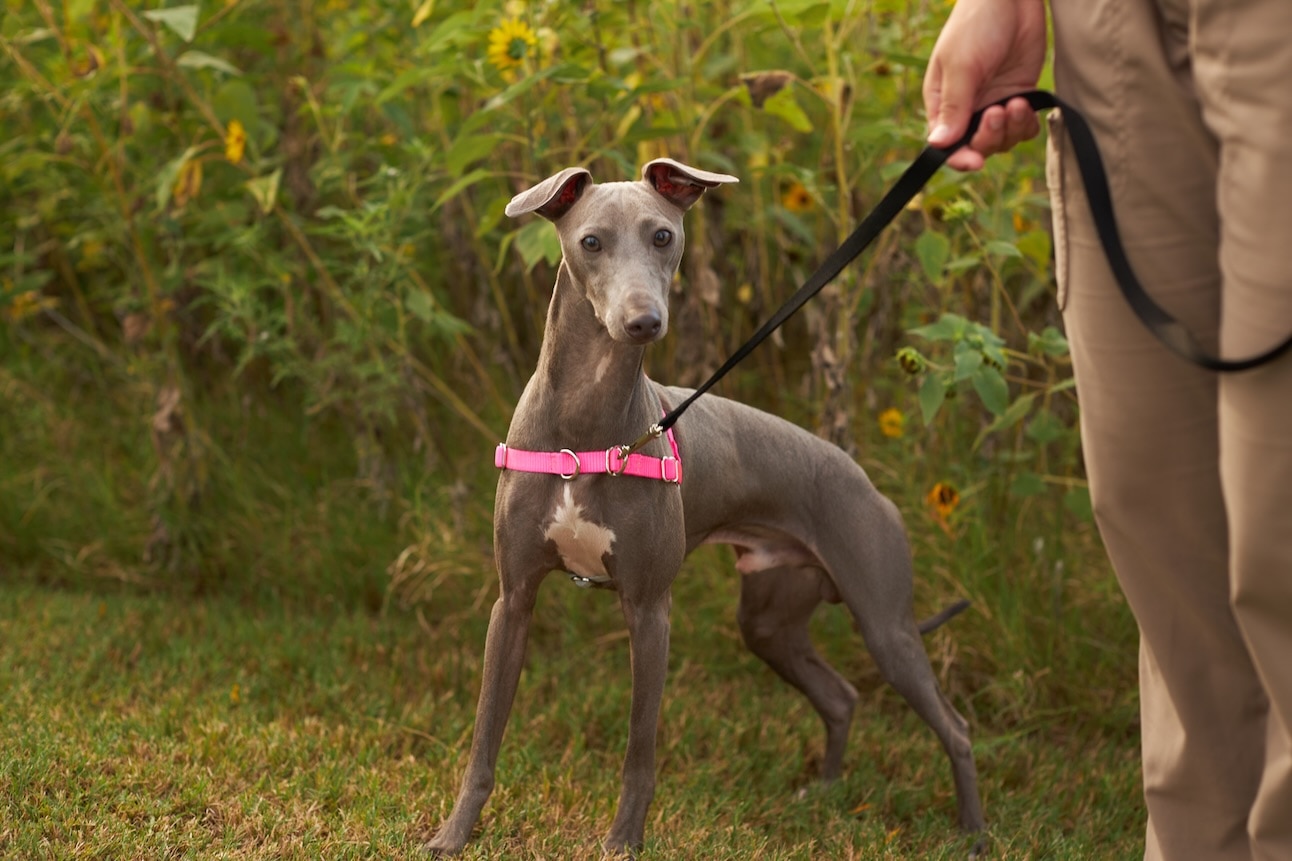
Photo by Chewy
One look at their long legs and streamlined bodies tells you these dogs are built for speed. But that speed is short-burst.
Prichard says these dogs are designed for intense energy that lasts just a handful of minutes, as opposed sporting dog breeds that have energy for hours.
For busy pet parents, that lower stamina means a few 20- to 30-minute walks, plus some off-leash playtime in a secure, fenced area, is usually enough. They’ll also need mental stimulation, so plan for puzzle toys, games, and fun training sessions.
Recommended Products
To put your sight hound’s speedy nature to work, try dog sports like lure coursing or Fast CAT. Usually, very little training is needed, since chasing a fast-moving object plays to their strengths.
Recommended Product
But a Greyhound and Whippet’s favorite thing about exercising might just be getting to rest afterward.
“They love soft places to lie; the floor is absolutely out of the question,” Pirrung says. So, make sure your dog has plenty of cozy spots.
Grooming
Greyhounds, Whippets, and Italian Greyhounds have a short, coarse coat that doesn’t shed a lot, so grooming is very low-maintenance.
A weekly brushing with a soft-bristle brush or rubber curry comb keeps coats shiny and reduces loose hair on furniture or floors.
Recommended Products
Other typical grooming tasks include:
- Brushing your dog’s teeth to keep plaque and tartar under control. As small dogs, Italian Greyhounds are particularly prone to dental disease, so dental hygiene needs to be a top priority for them.
- Trimming their nails as needed, usually every month or so. Nails that are too long can make running uncomfortable or even painful.
- Bathing your dog as needed. These breeds typically aren’t very smelly, so baths are occasional.
Health
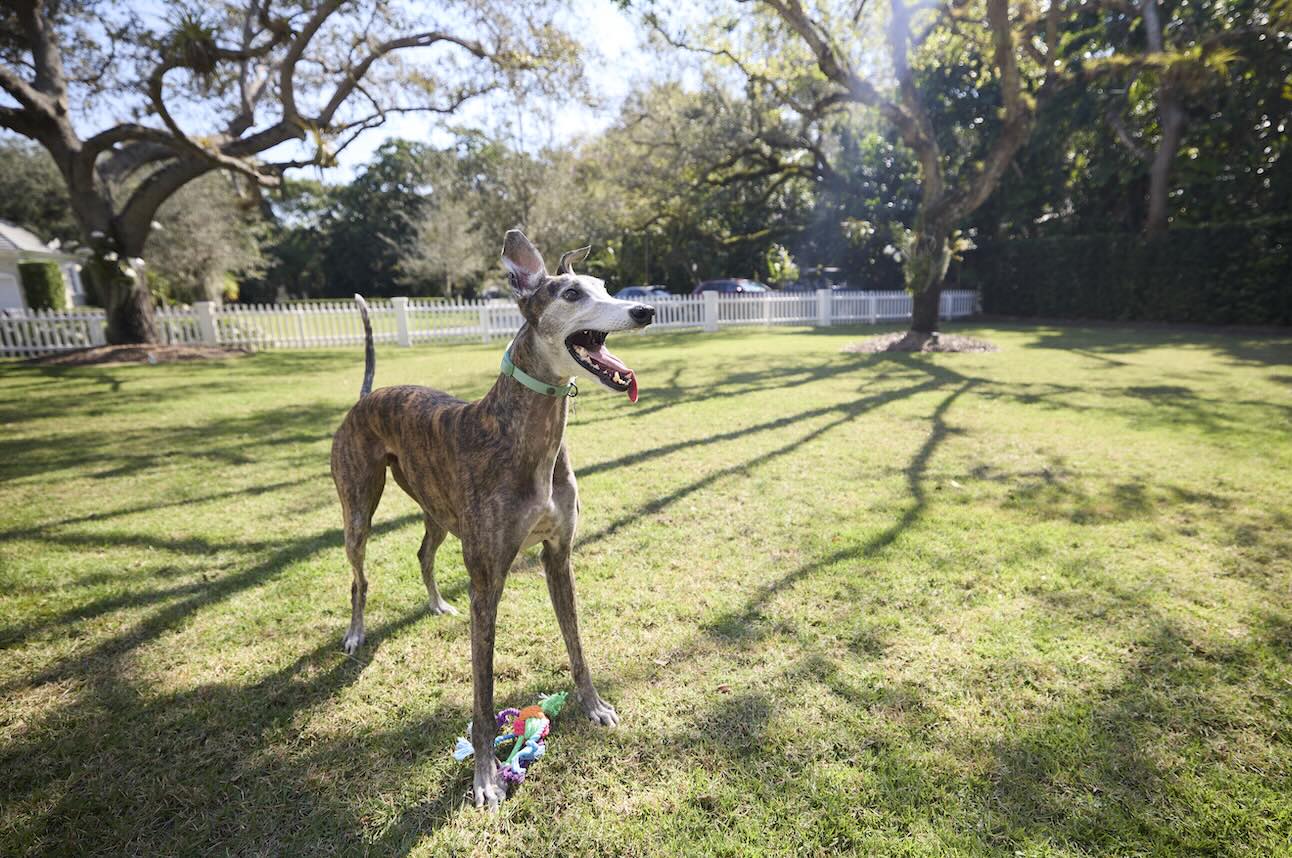
Photo by Chewy
Though these three sight hounds share lineage, they differ in lifespan and health considerations. All three have thin skin and can be prone to cuts, so check your dog after runs for nicks and scrapes.
Greyhounds
The average Greyhound lifespan is 10–13 years. They are susceptible to conditions including:
- Bloat and gastric dilatation volvulus (GDV): Greyhounds can be prone to a life-threatening condition called gastric dilatation-volvulus, which is a severe case of bloat in dogs. This is when the stomach distends with gas and/or food and twists, cutting off blood circulation to some abdominal organs. Signs include retching, pacing, excessive panting, and a distended stomach. Take your dog to the vet immediately if you suspect they’re experiencing bloat or GDV.
- Greyhound polyneuropathy: This is a nerve condition that can cause muscle weakness, lethargy, exercise intolerance, and a bunny hopping gait. There is no cure.
- Arthritis: Arthritis is common in older Greyhounds, especially in former racing dogs. Pain medications, weight management, physical therapy, and joint supplements may help your dog be more comfortable.
- Anesthesia sensitivity: Greyhounds lack a sufficient concentration of certain liver enzymes that metabolize drugs, so they may be slow to recover from sedation or anesthesia. This is something for your vet to be mindful of in the event that your Greyhound needs a procedure under anesthesia.
Whippets
Whippets live 12–15 years on average, and they’re relatively healthy dogs. But they can still develop certain conditions, including:
- Joint problems: Hip dysplasia and elbow dysplasia are common in this breed, and treatment depends on severity.
- Deafness: Whippet puppies can be born deaf, but with a few moderations (like training your dog with hand signals), they can live a long, happy, normal life.
- Von Willebrand disease (vWD): vWD is a bleeding disorder that makes it more difficult for a dog’s blood to clot. Coupled with a Whippet’s thin skin, this can make cuts, bruises, and other injuries more of a concern. Your vet can test your dog for this condition.
- Heart disease: Mitral valve disease can occur in the breed; regular veterinary checkups help with early detection and management.
Italian Greyhounds
As the smallest of the three breeds, Italian Greyhounds have the longest lifespan, at 14–15 years. They can be prone to:
- Autoimmune disease: Autoimmune disease can cause a range of symptoms for Italian Greyhounds. Schedule a vet exam if you notice changes in your dog’s skin, movement, or eating habits.
- Broken bones: Because of their delicate build, Italian Greyhounds can easily break a bone from falling off the couch, playing too roughly with bigger dogs, or other small mishaps. Supervision is key to prevention.
- Epilepsy: Epilepsy is a neurological condition that causes seizures in dogs and is managed by lifelong medication. With proper treatment, most affected dogs live long, relatively normal lives.
- Luxating patella: A common condition in small dogs, luxating patella occurs when the knee slips out of place. The condition can be managed with joint supplements and anti-inflammatory medication in mild cases, but serious patellar luxation may need surgery.
Whippet vs. Greyhound vs. Italian Greyhound: Which Is the Breed for You?
All three of these sight hounds are affectionate, gentle pets who make great family dogs. But to find your ideal match, consider your lifestyle:
- Greyhounds require a bit more room to lounge, but their couch-potato tendencies makes them a great fit for apartments and city living. Just make sure they get a few walks every day, plus an opportunity to sprint safely off-leash in a fenced area for a few minutes every day.
- Italian Greyhounds are more energetic but small enough to exercise indoors. They do best with older children who’ve learned how to properly interact with dogs and understand gentle handling, as they can be accidentally hurt during too-rough play.
- Whippets are a happy medium—athletic and up for adventure, with a calm temperament, and a bit hardier than Italian Greyhounds.
No matter which sight hound you choose, expect a devoted (and speedy) companion by your side.
